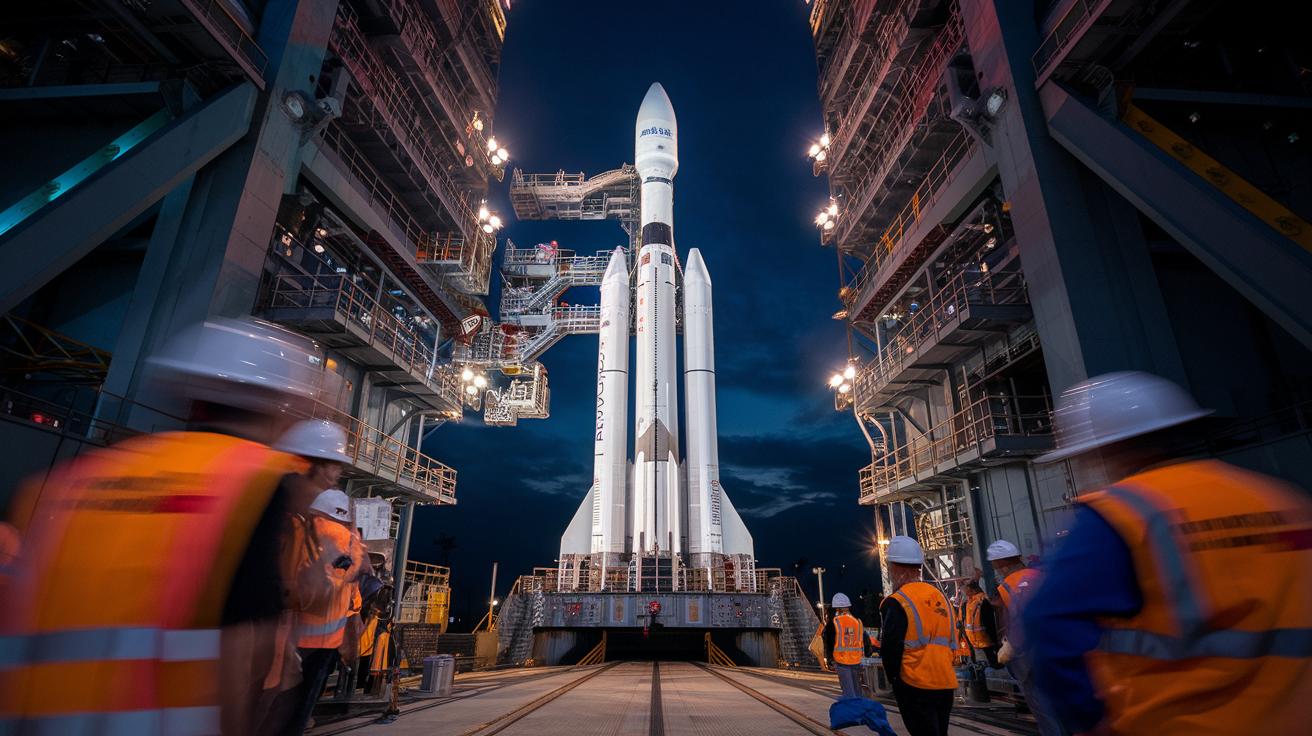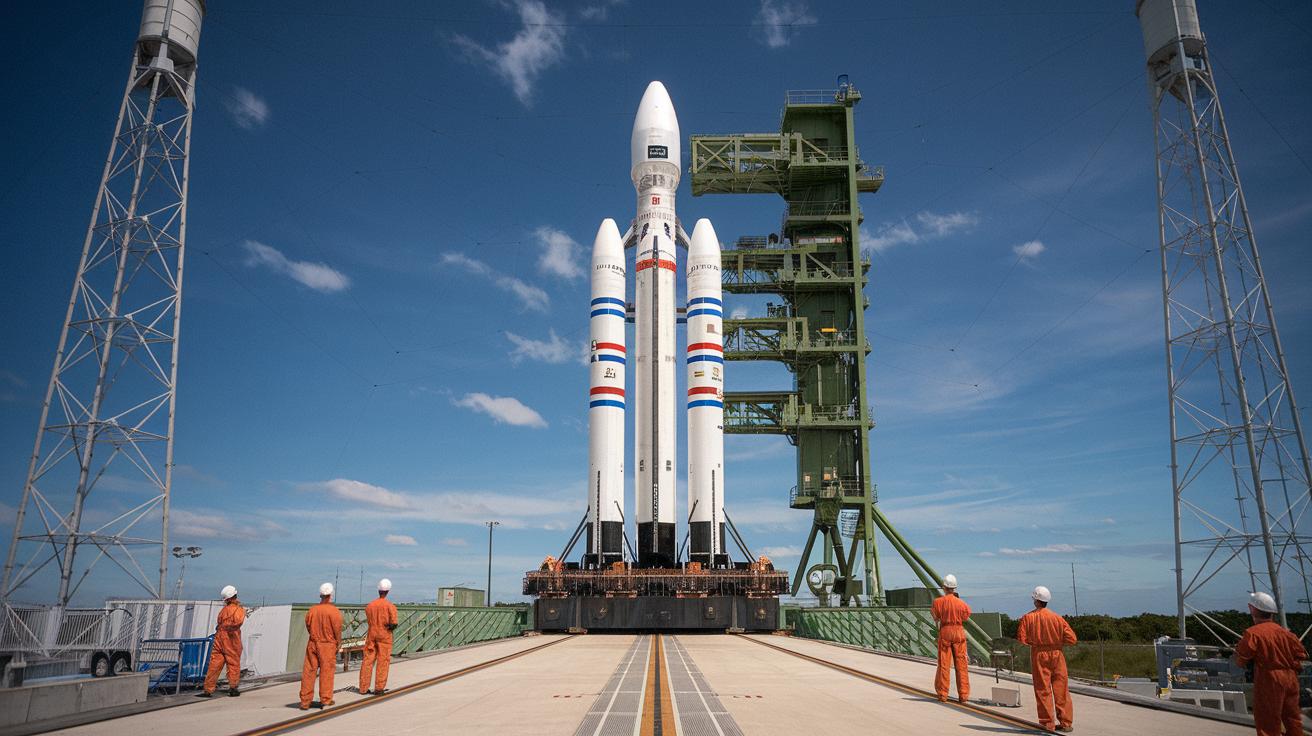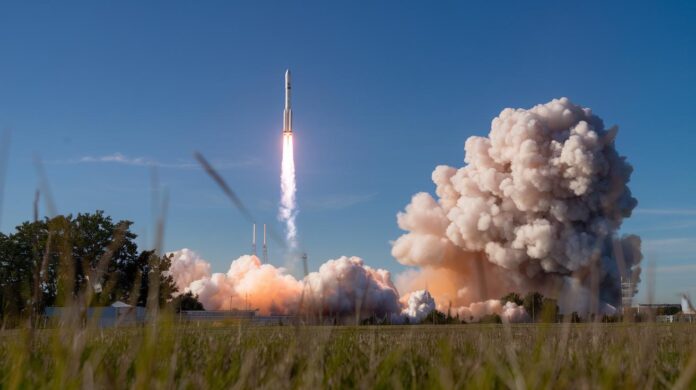Did Blue Origin's successful orbit mark the dawn of a new era in space exploration? On January 16, 2025, the private space company accomplished a monumental feat: its New Glenn rocket achieved orbit on the first attempt with an orbital-class rocket. This event not only highlights Blue Origin's technical prowess but also signifies a transformative moment for commercial spaceflight. As burgeoning competitors in the private space industry take note, the implications of this milestone reach far beyond individual success, setting the stage for a renewed space race marked by innovation and collaboration.
Blue Origin's Historic Orbit Achievement
On January 16, 2025, Blue Origin achieved a major milestone when its New Glenn rocket successfully reached orbit. This historic event marked the first instance of a new space company in the Western world reaching orbit on its initial attempt with an orbital-class rocket. The achievement underscores Blue Origin's growing capabilities in the competitive field of commercial spaceflight. Reaching orbit not only validates the technological prowess of the company but also positions Blue Origin as a formidable player within the private space sector. This success is pivotal, as it reflects the culmination of years of development and rigorous testing, ultimately expanding the potential for innovation and exploration in space technology.
- First Orbital Mission: Successfully reached orbit on its first attempt.
- Engine Power: Utilizes seven BE-4 engines for propulsion.
- Rocket Design: Features a first stage, an upper stage, and a protective nose cone.
- Thrust-to-Weight Ratio: Estimated to be around 1.2.
- Payload Capacity: Designed to carry significant cargo to orbit, enhancing mission versatility.
The implications of this success are profound for Blue Origin. With the New Glenn rocket's successful launch, the company is now well-positioned to expand its mission objectives and pursue more ambitious projects, including interplanetary travel and commercial space ventures. This achievement not only enhances Blue Origin's reputation but also incentivizes future collaborations and partnerships within the aerospace industry, further solidifying its role in shaping the future of space exploration.
The Technology Behind New Glenn's Success

The New Glenn rocket exemplifies advanced rocket technology, featuring a meticulously designed first stage, an upper stage, and a nose cone or payload fairing. This configuration ensures both the protection of the payload during launch and the achievement of orbital insertion. Central to its propulsion system are seven BE-4 engines, offering a thrust-to-weight ratio of approximately 1.2. This propulsion system enabled the upper stage to reach a 100-mile orbit, validating the design's effectiveness and precision in achieving its mission objectives.
First Stage
The first stage of the New Glenn rocket is crucial to the launch process, tasked with providing the initial thrust required to overcome Earth's gravitational pull. It is engineered to accommodate the dynamic forces encountered during liftoff, ensuring stability and efficiency. Structurally robust, it houses the powerful BE-4 engines, which collectively propel the rocket through the initial phases of its ascent.
Upper Stage
The upper stage is pivotal in the New Glenn's journey to orbit, responsible for the final push into space. This stage successfully achieved a 100-mile orbit, showcasing its capability to sustain the precise trajectory necessary for payload deployment. It is designed to operate in the vacuum of space, utilizing advanced propulsion technology to navigate and position itself accurately for mission completion.
Engines
At the heart of the New Glenn's propulsion are its BE-4 engines. These engines are integral to the rocket's performance, delivering substantial power with a thrust-to-weight ratio that balances fuel efficiency and thrust output. The BE-4 engines' reliability and operational efficiency are significant contributors to the rocket's successful launch and orbital insertion.
- Advanced Propulsion System: The integration of seven BE-4 engines facilitates powerful and efficient thrust.
- Sophisticated Payload Fairing: Protects the payload from environmental conditions during launch.
- Innovative Stage Separation Mechanism: Ensures smooth transition between stages, optimizing ascent and orbital insertion.
Challenges and Setbacks During the Launch
The launch of Blue Origin's New Glenn rocket faced several pre-launch delays, which tested the company's resolve and adaptability in executing a successful mission. The initial delay was attributed to adverse weather conditions, specifically rough waters, which necessitated the postponement of the launch until conditions were deemed safe. In addition, a prior launch attempt was canceled due to a wayward boat entering the designated safety zone, illustrating the unpredictable nature of external factors in space launch operations.
During the mission, the landing attempt of the first stage presented significant challenges. Although the rocket successfully reached orbit, the first stage's landing did not proceed as planned. There was a critical loss of telemetry and video feed during the landing sequence, indicating potential issues or failures in the recovery process. This setback serves as a reminder of the complexities involved in landing technology, especially for reusable launch vehicles that are vital for cost-effective space exploration.
Overcoming these challenges is crucial for the future trajectory of Blue Origin’s launch endeavors. Addressing these setbacks not only enhances the reliability of their launch vehicles but also solidifies their commitment to innovation and success in the competitive space industry. By learning from these experiences, Blue Origin can refine its technology and operational strategies, ultimately paving the way for more successful missions and advancements in commercial space travel.
Future Plans and Projects for Blue Origin

Blue Origin is strategically advancing its mission objectives following the successful orbital launch of the New Glenn rocket. Immediate plans focus on completing the development of the second New Glenn rocket, with enhancements aimed at refining performance and reliability. The continuation of efforts with the New Shepard suborbital rocket is also a priority, emphasizing its reusability for microgravity research and potential space tourism applications. Investigating the recent first stage landing failure forms a critical aspect of Blue Origin's agenda to improve the robustness and reusability of its rockets, thereby reducing costs and increasing launch frequency.
Long-term Vision
Blue Origin's long-term aspirations encompass more complex missions that extend beyond Earth's orbit. The company is pursuing interplanetary travel concepts, which will necessitate advancements in propulsion technology, payload capacity, and life support systems. Space tourism remains a central ambition, with initiatives to make suborbital and orbital experiences accessible to private citizens. These goals reflect Blue Origin's commitment to expanding humanity's reach into space, fostering innovation, and contributing to the growing commercial spaceflight ecosystem.
- Second New Glenn Rocket: Completion and launch are anticipated to enhance reliability and performance.
- New Shepard Launch: Ongoing preparations for future missions continue, focusing on microgravity research.
- Interplanetary Initiatives: Developing capabilities for missions beyond Earth's orbit.
- Space Tourism Development: Progressing towards making space travel accessible to private individuals.
Impact of Blue Origin's Achievement on the Space Industry
Blue Origin's recent success in reaching orbit with the New Glenn rocket significantly bolsters its standing among key competitors in the private space sector. How does this achievement affect Blue Origin's position? It positions the company as a formidable contender, capable of executing complex orbital missions, previously dominated by established aerospace giants. This milestone demonstrates Blue Origin's technological capabilities and commitment to advancing commercial spaceflight. As the first new space company in the Western world to achieve orbit on its initial attempt, Blue Origin sets a new benchmark for innovation and reliability, compelling competitors to accelerate their advancements in rocket technology and mission execution to maintain relevance in an increasingly competitive market.
What potential collaborations and trends might emerge from this development? Blue Origin's success opens the door for collaborations across various sectors, including governmental space agencies, private enterprises, and international partners. Such partnerships could foster shared technological development, resource pooling, and strategic planning for future missions. The achievement also highlights a growing trend towards the commercialization of space, where private companies play an integral role in exploration and development. As the space race evolves, there is likely to be an increased focus on sustainability, cost reduction, and reusability, driving innovations that could transform both near-Earth and interplanetary missions. This collaborative and competitive dynamic will shape the future trajectory of space exploration, positioning Blue Origin as a pivotal player in the ongoing expansion of human activities beyond Earth.
Final Words
Blue Origin's milestone as the New Glenn rocket successfully reached orbit underscores significant progress in commercial spaceflight. Despite challenges, such as launch delays and landing difficulties, the mission ultimately proved pivotal for the company's advancement and influence.
Technical innovations, pivotal in this achievement, have been spotlighted, laying a strong foundation for future endeavors. Looking ahead, Blue Origin's plans include further development of reusable technology and more ambitious goals, including interplanetary exploration.
This accomplishment garners considerable attention for its potential to reshape the competitive landscape, positioning Blue Origin as a key influencer in future industry trends.
FAQ
Has Blue Origin ever reached orbit?
Blue Origin's New Glenn rocket successfully reached orbit on January 16, 2025, marking a major milestone as the first Western company to achieve orbit on its initial attempt with an orbital-class rocket.
How long did it take Blue Origin to get to space?
Blue Origin achieved orbit with the New Glenn rocket on its first attempt in 2025, reflecting years of development and engineering efforts leading to this historic milestone.
Does Jeff Bezos own Blue Origin?
Jeff Bezos founded Blue Origin and continues to own and lead the company, driving its mission to expand access to space and foster technological advancement in space travel.
Will New Glenn ever fly?
New Glenn successfully flew and reached orbit on January 16, 2025. Blue Origin plans further flights, leveraging this success to enhance reusable rocket technology and expand its space endeavors.
How does the New Glenn rocket compare to SpaceX's Starship?
The New Glenn rocket's entry into orbit represents a significant achievement for Blue Origin, with ongoing comparisons to SpaceX's Starship regarding performance, technological advancements, and commercial applications.
What challenges did Blue Origin face during the New Glenn launch?
The New Glenn launch faced rough waters and a wayward boat caused delays. An attempt to land its first stage was unsuccessful due to telemetry and video loss, pointing to potential improvements needed.
What are Blue Origin's future plans and projects?
Blue Origin focuses on reusability, with plans to launch another New Glenn and prepare the reusable New Shepard. Future ambitions include interplanetary travel and pivotal projects to advance commercial spaceflight.
What impact does Blue Origin's achievement have on the space industry?
Blue Origin's orbital success positions it as a formidable competitor, influencing future space projects and elevating the standards of commercial spaceflight capabilities and innovation.


